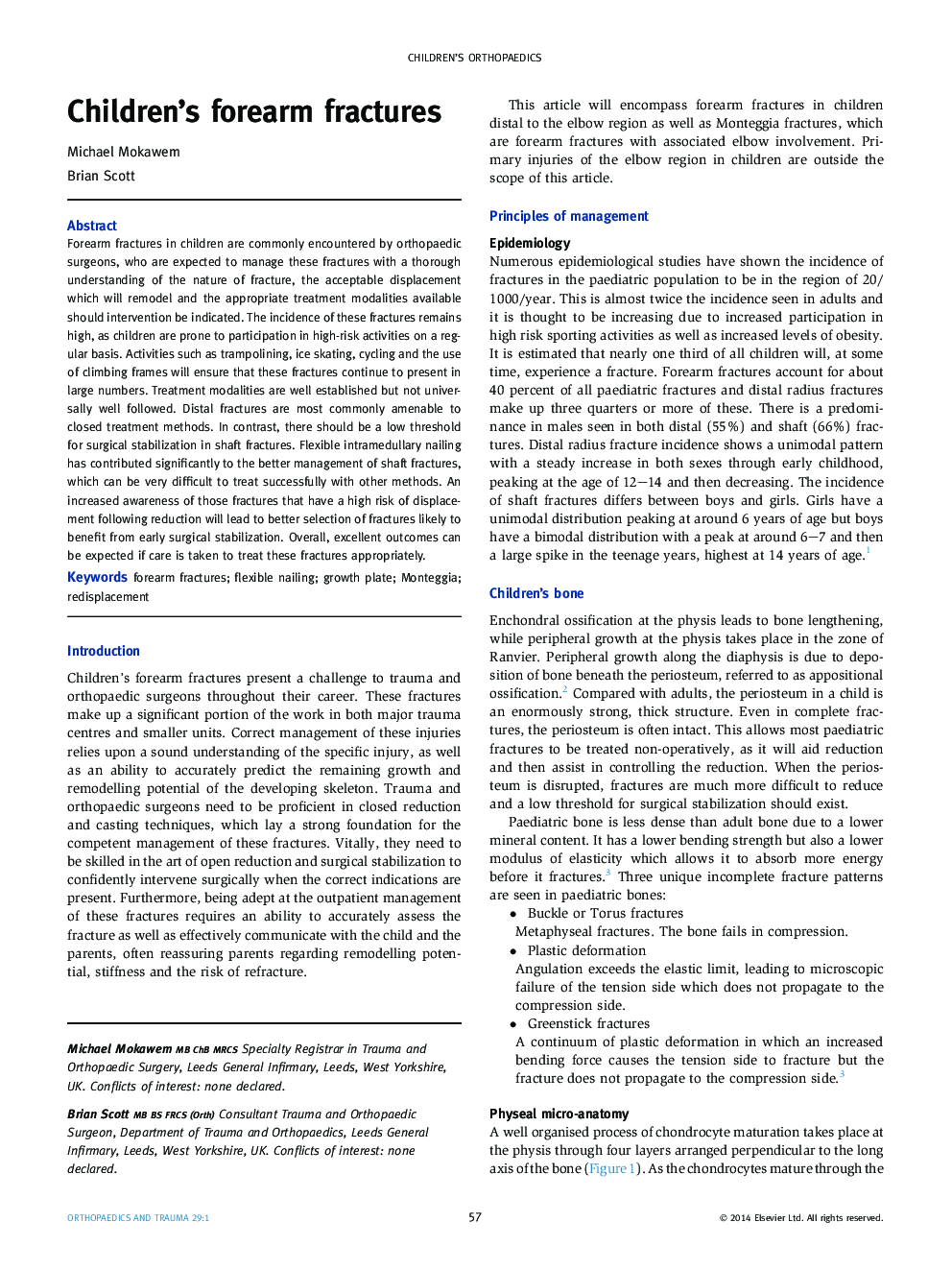| Article ID | Journal | Published Year | Pages | File Type |
|---|---|---|---|---|
| 4080155 | Orthopaedics and Trauma | 2015 | 12 Pages |
Forearm fractures in children are commonly encountered by orthopaedic surgeons, who are expected to manage these fractures with a thorough understanding of the nature of fracture, the acceptable displacement which will remodel and the appropriate treatment modalities available should intervention be indicated. The incidence of these fractures remains high, as children are prone to participation in high-risk activities on a regular basis. Activities such as trampolining, ice skating, cycling and the use of climbing frames will ensure that these fractures continue to present in large numbers. Treatment modalities are well established but not universally well followed. Distal fractures are most commonly amenable to closed treatment methods. In contrast, there should be a low threshold for surgical stabilization in shaft fractures. Flexible intramedullary nailing has contributed significantly to the better management of shaft fractures, which can be very difficult to treat successfully with other methods. An increased awareness of those fractures that have a high risk of displacement following reduction will lead to better selection of fractures likely to benefit from early surgical stabilization. Overall, excellent outcomes can be expected if care is taken to treat these fractures appropriately.
